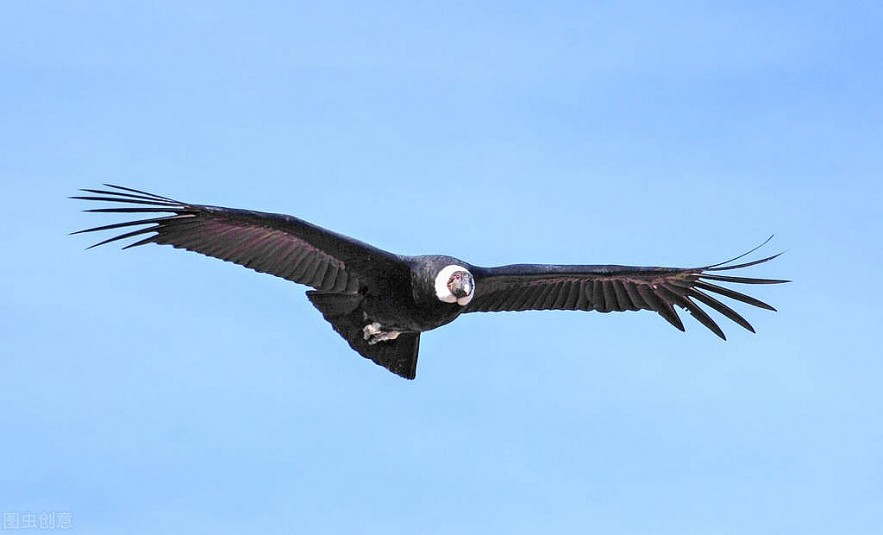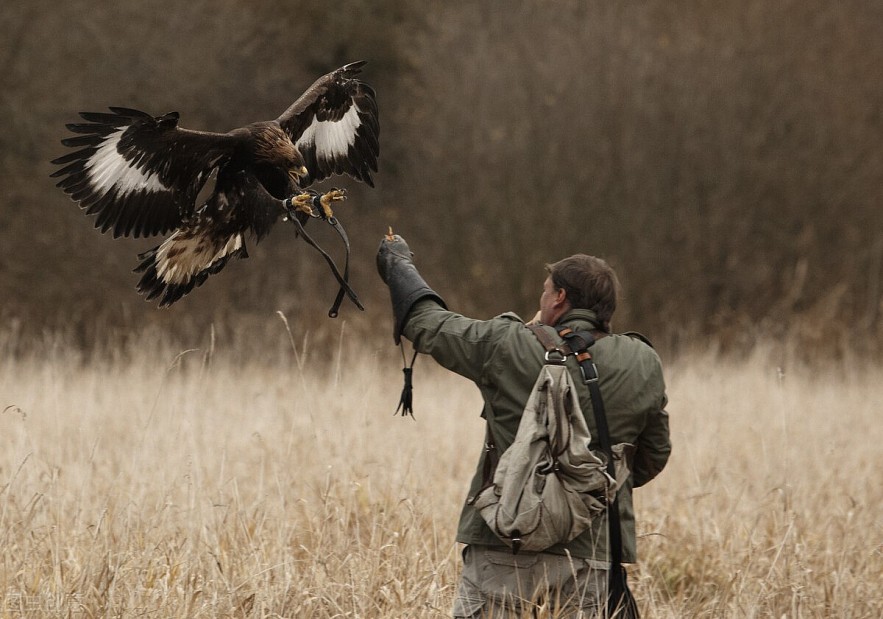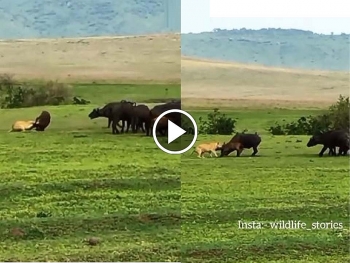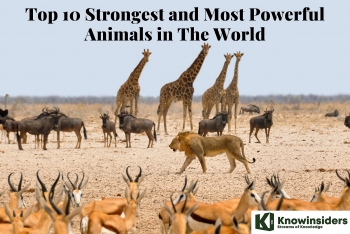What Is The Biggest Flying Bird On Earth
 |
| What Is The Biggest Flying Bird On Earth? Photo KnowInsiders |
In the bird world, who is the largest flying bird on earth? This question is like a lion or a tiger who is the real king of beasts. People have been arguing about it,
The largest bird known to mankind is Argentavis which is even larger than an airplane.
What is Argentavis?
Argentavis was a member of an extinct group of predatory birds understandably called the teratorns – ‘monster birds’. They are related to storks and New World vultures such as turkey vultures and condors. But Argentavis completely dwarfed even the massive Andean condor, weighing six times more and with a wingspan over twice as long (in the picture below, its silhouette is placed next to a bald eagle for scale).
How does Argentavis look like?
 |
| Photo inf news |
From a distance, it looks like a small airplane. It has no wings and tail, but a long tail. Its body is like a snake, and its body is covered with scales; The head resembles a giant eagle's beak.
How big is Argentavis?
It is currently estimated that a typical Argentine giant eagle is 1.5-1.8 meters tall, weighs about 70-72 kilograms, and has a body length of about 3.5 meters. It had a wingspan of 7m, about the same size as a Cessna 152 light aircraft.
In order to survive, the Argentine giant eagle needs to eat about 4.5 kilograms of meat a day. It is said that it kills ground sloths or armadillos and other small animals to get food.
Where did it live?
A long time ago, the Argentine giant eagle mainly lived in the region of Argentina now located in South America.
How did Argentavis grow up?
In ancient times, most mammals reproduced by laying eggs, and the Argentavis, the heaviest flying bird in the world, was no exception. Due to the large size of the Argentavis eagle, it only lays eggs every two years. The Argentavis eggs are very large with more than one kilogram each. Each time it lays only 1 to 2 eggs. Therefore, their eggs are larger than the ostrich eggs, and the Argentavis incubation process is also particularly difficult.
According to current archaeological fossil research, the Argentavis life expectancy can be up to 70 years, even some species have a lifespan of more than 90 years, so the lifespan of Argentavis is equivalent to modern human’s.
Each parent of Argentavis eagle takes a long time to develop into an adult eagle with the independent hunting ability. It will take more than two years for the eagle to reach maturity at the earliest, but the Argentavis mother and father will be very patient with their children and and will not leave the young until they are capable of surviving independently and flying on their own.
Can Argentavis fly with its heavy weight?
 |
| Photo inf news |
There is no question that Argentavis flew. It has all the characteristics of modern flyers including light, hollow bones and strong, sturdy wings. It’s how it flew that palaeontologists have puzzled over, given its massive size in relation to modern birds. For a start, how did it get its large bulk off the ground in the first place? The heaviest living flier, the Great Kori Bustard, is over three times lighter than Argentavis, and even it can only take off after arduously ‘taxiing’ like a airplane.
The largest bird in today's society is called the ostrich which is a very bulky creature, unable to fly in the sky. Although Argentavis is larger in size than the ostrich, its wings are strong enough to fly in the sky. Argentavis has a particularly powerful hunting ability, usually aims at the enemy without giving the enemy any chance. Argentavis is also not a picky eater. It can even eat the carcass of its enemies with great interest.
Modern biologists explain that although the wings of giant eagles are large and wide and look powerful, they do not actually take off by flapping their wings because of their size. Because it doesn't have enough power to make itself fly, it can only rely on the energy it carries and the muscle contraction to generate lift like a flying machine. In the vast pampas, updrafts must be relied upon. The Argentine eagle basically glides through the sky.
 |
| Photo inf news |
| How does such a huge eagle soar in the air and prey on the ground? Now scientists have conducted long-term investigations and studies on the remaining fossils and have come to some conclusions. The skeleton of the Argentine giant eagle is hollow. The bones of the two wings are not only of considerable length, but also hard and not easy to be injured. However, this does not mean that it can fly in the air without restraint. In fact, the power created by the muscles of the Argentine giant eagle does not make it fly freely. It mainly uses the principle of airflow gliding to glide in the air. It is worth mentioning that it is very smart and knows how to use the approach or at higher altitudes. Isn't it amazing that the place takes off? |
Argentavis' habits of life
 |
| Photo inf news |
Biologists now speculate that giant eagles are too lazy to hunt aggressively in the open grasslands because of their large size, and for small prey, they usually simply eat their prey. But in some special occasions (such as large birds), it will take the initiative to find prey and compete fiercely with it to gain more time and space to meet its survival needs. With abundant food and no predators, they appear more lazy and less likely to take the initiative, like vultures, which is typical of opportunism, and their corpses fly over for a free meal.
The Argentine giant eagle has a strong claw grip and can grasp larger animals, but due to the limitations of their huge wings, even catching prey is unlikely to bring back to their original comfort zone, mainly hunting smaller animals, which is better for carcass carrion.
Argentine giant eagles have a long lifespan, possibly 50 to 100 years, because they have no natural enemies, which slows them down. The breeding cycle is about once every two years, with 1-2 eggs at a time, each egg weighing no more than 2 kg. After hatching, they live together forever. For a long time, they were polycultured with other birds and rarely mated with other birds. Giant eagles don't attack other birds either. The growth of young birds is more dependent on their parents, usually requiring parental care for 16 months to become independent, while activities such as predation take more than 10 years to fully mature. Adult giant eagles lay about 30 to 40 eggs in their lifetime.
The Argentine giant eagle is extinct
Fossil eagles found in Argentina appear to be difficult to assemble. They are basically scattered fragments of tissue. Don't look at the size of giant eagles in Argentina, but the bones are usually hollowed out in the middle, so it is difficult to preserve fossils.
Experts speculate that the extinction of the Argentine giant eagle is related to its size, first of all because of its large size and the need for more food. Secondly, the chicks need to practice constantly when hunting, because the chicks are difficult to take off in situ and need outside help, which causes a lot of physical losses. The second is the long breeding period and low survival rate. Therefore, in nature, only those organisms that can adapt to natural conditions and can use natural advantages to survive and develop will survive. And what about us humans? You can only choose an environment that is suitable for your own survival and reproduction. There are no natural enemies in the world, so they are destroyed by the natural laws of nature's survival of the fittest.
 Amazing Facts About The Slowest Animals In The World Amazing Facts About The Slowest Animals In The World Some animals are slow, and some are extremely fast. So what are the slowest animals in the world? Keep reading the article below to know ... |
 Lioness Attacked a Calf but Later had to Repent - Hot Animal Video Lioness Attacked a Calf but Later had to Repent - Hot Animal Video Find out a shocking video for you in which a Lioness attacked the calf but later had to repent. |
 10 Strongest and Most Powerful Animals in The World 10 Strongest and Most Powerful Animals in The World The animal world has always been a topic of interest to everyone. If the ratio of strength to body mass is considered, many small animals ... |
























